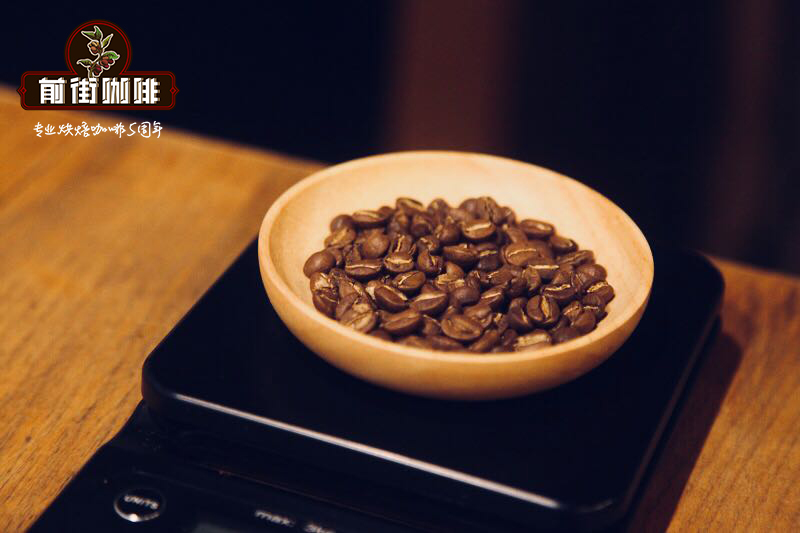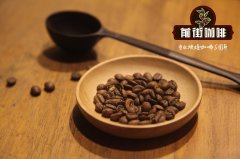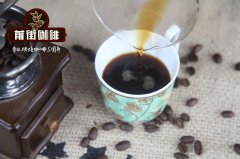Introduction of Kenyan coffee hand siphon brewing method comparison of the quality of Kenyan coffee Kenyan aa

Professional coffee knowledge exchange more coffee bean information please follow the coffee workshop (Wechat official account cafe_style)
The first Kenyan coffee grown in Kenya dates back to 1893. Kenyan coffee was later grown on a large scale by the British on a plateau between 1400 and 2100 meters above sea level, where there is volcanic ash soil rich in organic matter. In fact, most coffee is now grown on the flatter slopes around the snow-capped Mount Kenya (the main peak is 5199 meters high). The whole of Kenya is located in the tropical monsoon area, but due to its higher topography, the climate is savannah climate. there are great differences in precipitation seasons. The highest temperature of the year is 22 ℃, and the lowest temperature is 10 ℃. These conditions are very suitable for the excellent growth of Arabica beans. And high-quality Arabica coffee beans, its suitable growth conditions are on the slopes of 900m-2000 m above sea level in the tropics, the suitable growth temperature is 15Mur24 ℃, higher humidity, annual rainfall of not less than 1500 ml, fertile soil is suitable for acid and alkali, volcanic ash is very suitable, and appropriate sunshine and shade conditions, based on these characteristics, most of them are located in countries with alpine topography in the Tropic of Cancer. This generation is also known as the world coffee belt, and Kenya happens to be one of them, and the topographical and climatic conditions are very suitable for the growth of high-quality coffee.
Then after tracing back to the origin, it should be a variety. However, what kind of Kenyan AA is the Kenyan AA that I drink with a strong ripe fruit flavor and red wine flavor? What level does it belong to?
The answer is that although Kenya borders Ethiopia, the ancient coffee country, Kenya did not develop the Kenyan coffee planting industry until the beginning of the 20th century due to the intervention of British and French forces. Interestingly, Ethiopia is a natural ancient variety, without the help of variety screening and genetic engineering, and does not apply chemical fertilizers and pesticides. In Kenya, on the contrary, not only coffee varieties are selected or mixed-race improved varieties, but also chemical fertilizers, pesticides and sun-exposed inorganic planting methods. Unexpectedly, the taste spectrum of the coffee is not only not vulgar, but also very delicate, with bright and changeable acidity, good sweetness and thickness, and better cleanliness than other countries. This is mainly due to Kenya's outstanding variety: SL28/SL34, which has been screened and improved by hybrids, and the unique global double fermentation washing method.
Recommended way to brew Kenyan coffee: siphon, hand brew
Degree of grinding: 3.5 (Fuji R440, Japan)
Water temperature: 91 °C
V60 filter cup, 15g powder, water temperature 95 degrees, grinding 3.5, ratio of water to powder close to 1:15
Steaming in 30 grams of water for 30 seconds
Segment: water injection to 110ml cut off, slow water injection to 225ml
That is, 30-110-85
Specific hand flush [Kenya AA] Karoguto: 15g powder, medium and fine grinding (small Fuji ghost tooth knife 3.5grind), v60 filter cup, 90-91 degrees water temperature, the first water injection 30g water, conduct 30s steaming, injection to 110g water cut off, wait for powder bed water to half of water injection, slow water injection until 225g water quantity, tail section do not, gouache ratio 1:15, extraction time 2:12.
Important Notice :
前街咖啡 FrontStreet Coffee has moved to new addredd:
FrontStreet Coffee Address: 315,Donghua East Road,GuangZhou
Tel:020 38364473
- Prev

An introduction to the "Coffee War" of Kenyan Coffee
Professional coffee knowledge exchange more coffee bean information please follow the coffee workshop (Wechat official account cafe_style) to Kenya to try the authentic Kenyan coffee, Kenyan coffee aroma, rich, balanced acidity delicious, with excellent fruit flavor, taste rich and perfect. It is one of the most popular varieties in the industry. The results of a survey released by the local media show
- Next

An exclusive Guide to the treatment of refined Honey in Mozart Coffee
Professional coffee knowledge exchange more coffee bean information please follow Coffee Workshop (Wechat official account cafe_style) Costa Rican Carnett musicians series-Mozart Coffee exclusive honey treatment spectrum graceful special flavor Canet is located in Costa Rica Tarrazu coffee growing in the highest altitude region. This area is the most densely planted area of fruit in Costa Rica.
Related
- Detailed explanation of Jadeite planting Land in Panamanian Jadeite Manor introduction to the grading system of Jadeite competitive bidding, Red bid, Green bid and Rose Summer
- Story of Coffee planting in Brenka region of Costa Rica Stonehenge Manor anaerobic heavy honey treatment of flavor mouth
- What's on the barrel of Blue Mountain Coffee beans?
- Can American coffee also pull flowers? How to use hot American style to pull out a good-looking pattern?
- Can you make a cold extract with coffee beans? What is the right proportion for cold-extracted coffee formula?
- Indonesian PWN Gold Mandrine Coffee Origin Features Flavor How to Chong? Mandolin coffee is American.
- A brief introduction to the flavor characteristics of Brazilian yellow bourbon coffee beans
- What is the effect of different water quality on the flavor of cold-extracted coffee? What kind of water is best for brewing coffee?
- Why do you think of Rose Summer whenever you mention Panamanian coffee?
- Introduction to the characteristics of authentic blue mountain coffee bean producing areas? What is the CIB Coffee Authority in Jamaica?

